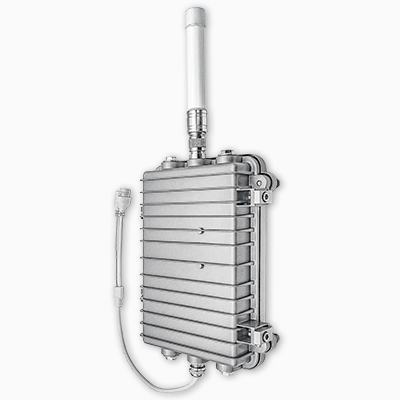Making Wireless IoT Project Easy, Smart, Secure.
GET A FREE SAMPLEIn ultra wideband (UWB) positioning technology, there are various positioning methods with unique principles and characteristics.
1、 UWB-TDOA arrival time difference
This technology is based on TDOA (Time Difference of Arrival Principle). Using UWB technology, measure the time difference of radio signal propagation between two different positioning base stations relative to the positioning tag, and then obtain the distance difference of the positioning tag relative to four sets of positioning base stations. Through this method, the location of the positioning tag can be accurately determined.

2、 Signal strength RSSI
RSSI (Received Signal Strength Indicator) measures the power of wireless signals at the receiving end and calculates the distance between the receiving and transmitting ends based on the Friis transmission model of wireless signals. However, from the Friis transmission model, it can be seen that the ranging results of RSSI are greatly affected by various environmental factors, such as the design of transmitting and receiving antennas, multipath propagation, non line of sight propagation, direct path loss, etc. In practical applications, the ranging accuracy is about 10 meters, far lower than methods based on timestamp ranging. Therefore, RSSI based methods are rarely directly used for UWB positioning.
3、 Time of Flight (TOF)/Time of Arrival (TOA)
TOF (Time of Flight)/TOA (Time of Arrival) calculates the propagation time of wireless signals from the transmitting device to the receiving device by recording the sending and receiving timestamps of ranging messages, and then multiplies it by the speed of light to obtain the distance between devices. According to the different transmission methods of distance measurement messages, they can be divided into one-way distance measurement and two-way distance measurement. In one-way distance measurement, distance measurement messages only propagate in one direction. To obtain the flight time between devices, both devices need to maintain accurate clock synchronization, which makes the system implementation complex and costly. However, bidirectional ranging does not require clock synchronization between both devices, and the system implementation complexity and cost are very low. Therefore, in practical applications, the main focus is on bidirectional ranging schemes.
4、 Single Sided Bidirectional Ranging (SS-TWR)
In the SS-TWR (Single Sided Two Way Ranging) algorithm, the ranging requesting device initiates a ranging request, and the ranging responding device listens and responds to the ranging request. Then, the ranging requesting device uses all timestamp information to calculate the flight time between devices.
5、 Angle of Arrival (AOA) and Phase Difference of Arrival (PDOA)
AOA and PDOA are also important methods in UWB positioning, which determine the position of the device by measuring the angle or phase difference of the signal arrival.
In short, UWB positioning technology has multiple different positioning methods, each with its own advantages and applicable scenarios. In practical applications, suitable positioning methods can be selected according to specific needs to achieve more accurate and efficient positioning services.
Copyrights© Shenzhen Skylab Co.,LTD All Rights Reserved.

